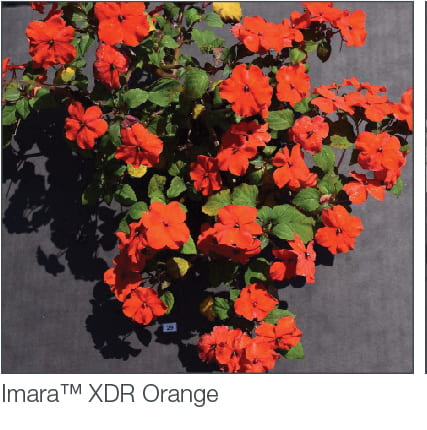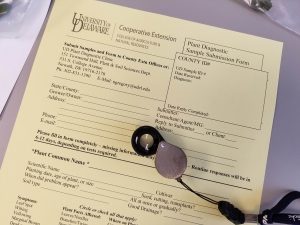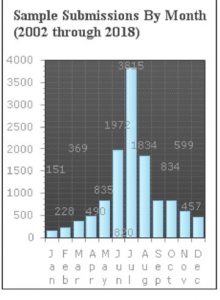Tag: plant disease
Oak Wilt Fact Sheet
Impatiens Downy Mildew Resistance Available!
PanAmerican Seed announced a series of I. walleriana with resistance to Impatiens downy mildew. Beacon Impatiens, according to a press release, offer season-long performance and color to the shade without the disease risk. "... we are confident that our greenhouse customers, retailers and gardeners alike will have the confidence to grow garden Impatiens once more.” “With a plant structure, flowering time and flower size that is similar to existing Impatiens, ... There’s no special plant culture required for Beacon to be successful. Beacon Impatiens will have its debut at shows in 2019, with six core colors and two mixes in the series. A limited supply is available, with greater availability in 2020.

Syngenta Seed also has a release of resistant impatiens, the Imara TM series: https://www.syngentaflowers-us.com/campaign/imara-XDR-impatiens . Impatiens walleriana with a high degree of resistance to downy mildew.* Proven landscape performance with reliable flowering all season long. Easy and economical, ideal for growing in packs and pots. ‘Welcome Back!’ to a favorite shade bedding plant.
NFG 2/6/19
Pest Management in High Tunnels
The Kentucky Pest News, Weekly Newsletter had a great article about pest management in high tunnel situations, mostly biological control, as many chemical control products are not labeled for high tunnel use. Here is the link: https://kentuckypestnews.wordpress.com/2018/11/06/biological-pest-management-in-kentucky-high-tunnel-greenhouse-tomato-production-systems/ .
Addressing mostly arthropod pests, these are good guidelines for disease control too: 
- Sanitation and cultural controls in and around structures, which includes screening and weed control.
- Biweekly Monitoring – visual inspection of plants and sticky cards, keeping written records.
- Recognize pest problems early, before they are at critical levels. Properly identify pests; for some, identifying them to species. County Extension offices can help.
- Release beneficial species (natural enemies and pollinators) – monitor effects – consult with extension specialists. Beneficial species require management.
- Anticipate future problems based on previous crop history (refer to records).
Early Fall Leaf Drop
Excessive rains have led to widespread occurrence of fungal anthracnose and bacterial leaf scorch in trees, as well as other tree diseases, and resulted in lots of mushrooms and bracket fungi. We are noticing many leaves falling early from trees such as silver maple

and sycamore. In disease affected trees, defoliation may be noticeable especially in low lying areas without good air circulation. At this point in the season, leaf spot and drop will have no long term effect on the health of the trees.
NFG 10/5/2018
Boxwood Blight in DE MD PA NJ
Conditions of wet weather and high humidity have been very favorable for boxwood blight in the Mid-Atlantic region, where states have confirmed boxwood with the serious blight. The fungus Calonectria pseudonaviculata causes severe defoliation and death of container boxwoods, and dieback of in-ground plantings. Most boxwood species are susceptible, including American and English boxwood (Buxus sempervirens), little leaf boxwood (B. microphylla) and hybrids such as B. sinica. Pachysandra is a host, and can be a source of spores causing new infections. Sweetbox (Sarcococca) has been identified as a host. Other diseases affect boxwood, and environmental stress plays a role in predisposition to disease.
Most boxwood species are susceptible, including American and English boxwood (Buxus sempervirens), little leaf boxwood (B. microphylla) and hybrids such as B. sinica. Pachysandra is a host, and can be a source of spores causing new infections. Sweetbox (Sarcococca) has been identified as a host. Other diseases affect boxwood, and environmental stress plays a role in predisposition to disease.  Timely and accurate identification by microscopy is important for management of this aggressive disease. Sanitation is extremely important in management. Contact DE Dept of Ag or the UD Plant Diagnostic Clinic if you suspect boxwood blight.
Timely and accurate identification by microscopy is important for management of this aggressive disease. Sanitation is extremely important in management. Contact DE Dept of Ag or the UD Plant Diagnostic Clinic if you suspect boxwood blight.
NFG 9/28/2018
How to Scout and Troubleshoot Crop Problems
New fact sheet/ quick one page guide: take this with you when you scout your fields or  plantings. What you need. What to look for.
plantings. What you need. What to look for.
How-to-Scout-and-Troubleshoot-Crop-Problems-Fact-Sheet-2018
NFG 8/30/2018
June a Very Busy Month for UD Plant Diagnostic Clinic
June was a very busy month for the UD Plant Diagnostic Clinic, with 160 plant and arthropod samples logged into the data system. Of those samples, 133 or 86% were from Delaware, but 22 were from MD with 5 from VA. Most (87%) were for disease diagnosis, but there were some arthropod ID's, and some plant/weed ID's. Commercial samples through  Cooperative Extension accounted for 56% of samples. Ornamental plants made up 37% of samples, with environmental stress playing a role, and Botrytis and bacterial blight showing up. Vegetable samples made up 40% of the total, and Field Crops 12%. Take all of wheat was diagnosed for the first time in a few years, and anthracnose and gray leaf spot have been seen on corn. Potato and tomato were diagnosed with early blight caused by Alternaria.
Cooperative Extension accounted for 56% of samples. Ornamental plants made up 37% of samples, with environmental stress playing a role, and Botrytis and bacterial blight showing up. Vegetable samples made up 40% of the total, and Field Crops 12%. Take all of wheat was diagnosed for the first time in a few years, and anthracnose and gray leaf spot have been seen on corn. Potato and tomato were diagnosed with early blight caused by Alternaria.
Leaf Spots in Garden Tomatoes
A UD fact sheet, updated in February of 2017 gives timely info on leaf spot diseases of garden tomatoes. Fungal leaf diseases such as Septoria, bacterial leaf spot, and early blight can cause loss of leaves.  Some leaf diseases such as anthracnose can lead to problems on ripening fruit. Click link below for fact sheet:
Some leaf diseases such as anthracnose can lead to problems on ripening fruit. Click link below for fact sheet:
Tomato-Leaf-Spots-Fact-Sheet-Feb2017
Pest and Beneficial Insect Walk in the UDBG June 20, 2018
Pest and Beneficial Insect Walk, $15 Wednesday, June 20, 4-6 pm, University of Delaware Botanic Gardens, 531 S College Avenue, Newark. Meet at the entrance to Fischer  Greenhouse. Learn to identify insect and disease pests, as well as beneficial insects in the landscape on a walk through the University of Delaware Botanic Gardens. Instructors: Nancy Gregory, Brian Kunkel, and Carrie Murphy. Credits available: 2 pest, 2 ISA, and 1 CNP. Register with Carrie Murphy (302) 831-2506 or cjmurphy@udel.edu
Greenhouse. Learn to identify insect and disease pests, as well as beneficial insects in the landscape on a walk through the University of Delaware Botanic Gardens. Instructors: Nancy Gregory, Brian Kunkel, and Carrie Murphy. Credits available: 2 pest, 2 ISA, and 1 CNP. Register with Carrie Murphy (302) 831-2506 or cjmurphy@udel.edu
NFG 6/11/18

